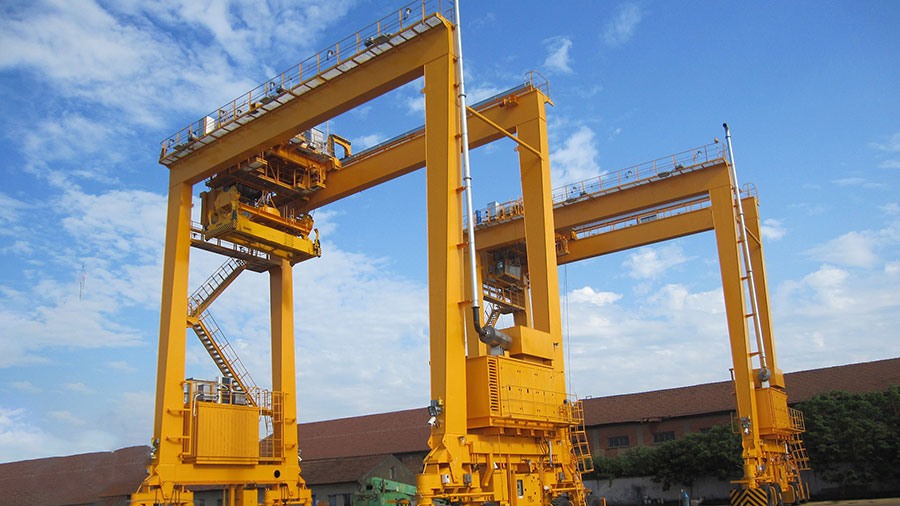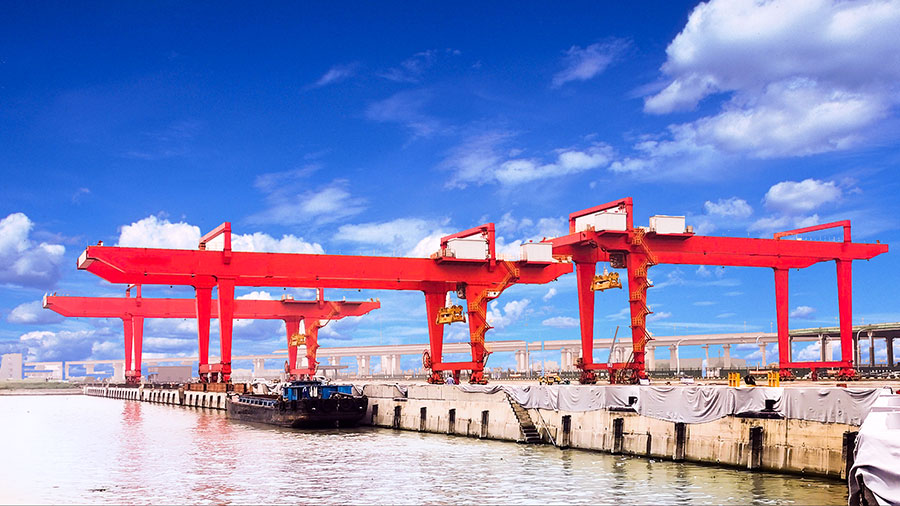Port gantry cranes are the backbone of container terminal operations, facilitating the loading and unloading of containers from ships. They play a crucial role in ensuring that port operations run smoothly, efficiently, and safely. However, selecting the right port gantry crane for your terminal is a complex decision that depends on several factors, from the type of cargo to the available space, and from environmental conditions to technological requirements.
In this article, we will explore the key factors to consider when choosing the right port gantry crane for your terminal operations, ensuring you make an informed decision that maximizes productivity, safety, and cost-effectiveness.

1. Understand the Type of Cargo Handled
The first and most obvious consideration when choosing a port gantry crane is the type of cargo you handle. While containerized cargo is the most common type in many terminals, there are ports that deal with bulk cargo, heavy lift cargo, or even project cargo. Each type of cargo requires different specifications from a gantry crane.
For containerized cargo, you will need a container gantry crane with a specialized spreader that can handle standard containers and potentially oversized containers. On the other hand, if your port handles bulk cargo, you may need a gantry crane with custom attachments designed for handling bulk materials like grain, coal, or ores.
Additionally, some ports specialize in heavy lift operations, where large and heavy loads are handled. In these cases, a gantry crane with high lifting capacities and specialized lifting beams is necessary. Understanding the types of cargo your terminal handles will help you select a crane with the appropriate lifting capacity and attachments.
2. Determine the Crane Capacity
The lifting capacity of a port gantry crane is one of the most critical factors in selecting the right crane. The crane’s lifting capacity determines the maximum weight it can safely lift, which is essential to ensuring the crane can handle the demands of your terminal.
When choosing a crane, consider the maximum weight of the cargo you typically handle, and make sure that the crane you choose can easily manage these loads. Container gantry cranes typically have lifting capacities ranging from 30 to 100 tons, but specialized cranes for heavy cargo might go up to several hundred tons.
Overloading a crane is not only dangerous but also leads to unnecessary wear and tear, which reduces the crane’s lifespan. Therefore, ensuring that your crane has an adequate lifting capacity is key to both safety and operational efficiency.
3. Consider the Reach and Span Requirements
The reach and span of a port gantry crane refer to the distance it can cover horizontally to reach containers or cargo on the ship and move them onto the dock. This is particularly important when dealing with large vessels or terminals with limited space.
Span refers to the width of the crane’s working area, and it must be wide enough to span the width of the vessel and the docks. Reach is the distance the intermodal gantry crane can extend over the vessel to load or unload containers. The right span and reach depend on the size of the vessels your terminal handles and the layout of your terminal.
If your terminal services large container ships, you will need a crane with a long reach and wide span to accommodate the vessel’s size. In contrast, terminals serving smaller vessels might require a crane with a more compact reach and span.

4. Evaluate the Crane’s Working Duty and Speed
Port gantry cranes work in high-demand environments, and their efficiency depends on their working duty and speed. The working duty classification is an indication of how often and for how long a crane will be used, and it determines the crane’s ability to withstand wear and tear over time.
The working duty of port gantry cranes is classified according to the number of cycles they complete per hour and the intensity of the work. Some terminals require cranes to work for long hours with quick turnarounds, while others may have less intensive operational requirements. The most common duty ratings for port gantry cranes are A5, A6, and A7, with A7 being suitable for heavy-duty applications with high frequency of use.
Speed is also a key consideration. The lifting speed, trolley travel speed, and crane travel speed all affect the overall throughput of the terminal. If your terminal has high traffic volumes and requires quick turnaround times, choosing a crane with higher speeds will boost productivity. However, higher speeds often come at a higher cost, so you will need to balance speed with the operational requirements and cost considerations.
5. Consider the Terminal Layout and Space Constraints
The layout of your terminal is another crucial consideration when choosing the right port gantry crane. The available space will dictate the container crane types you can install. Terminals with limited space may benefit from compact cranes or mobile cranes, which offer flexibility and can be repositioned as needed.
Additionally, the crane’s size and footprint should align with the dock’s design. If the terminal has narrow aisles between vessels, it is essential to choose a crane that fits within these constraints while still providing the necessary reach and lifting capacity.
The number of quay cranes you need will also depend on your terminal’s operational layout. Some terminals benefit from having multiple smaller cranes, while others prefer a few larger cranes to handle the entire load.
6. Environmental and Weather Conditions
Environmental conditions, including weather, temperature, and wind conditions, should also be factored in when selecting a port gantry crane. High winds can affect the stability and safety of crane operations, particularly when handling heavy or tall containers. Cranes used in such environments must be equipped with wind speed sensors and anti-sway systems to mitigate these risks.
If your terminal operates in cold weather conditions, you may need to ensure that the crane’s design accounts for lower temperatures, which can affect the crane’s materials, lubricants, and performance.
7. Technological Integration and Automation
With the growing demand for automation in the shipping industry, many terminals are moving towards automated and semi-automated gantry cranes. Automated port gantry cranes are equipped with smart technologies, including GPS tracking, machine learning algorithms, and remote operation capabilities. These features allow for more efficient container handling, reduced labor costs, and increased safety.
When selecting a port gantry crane, consider whether automation fits with your terminal’s long-term goals. Automated rail mounted gantry cranes require more significant upfront investment but can deliver higher returns through increased productivity and safety.
8. Cost and Budget Considerations
Finally, the cost of the crane is a major factor in the decision-making process. The price of a port gantry crane varies depending on its specifications, features, and the manufacturer. While a high-end, fully automated crane may have an expensive upfront cost, it could save money in the long term by reducing labor costs and improving efficiency.
It’s also important to consider maintenance costs, as cranes that require more frequent repairs and replacements can quickly eat into your budget. Be sure to choose a crane with the right balance of initial cost and long-term savings.
Conclusion
Selecting the right port gantry crane for your terminal operations is a decision that requires careful planning and consideration. By understanding your terminal’s needs, evaluating factors such as crane capacity, span, duty rating, and environmental conditions, you can ensure that the crane you choose will enhance efficiency, reduce downtime, and contribute to the long-term success of your operations.
Furthermore, advancements in automation and technology are increasingly shaping the future of port gantry cranes, offering opportunities to boost productivity while reducing costs. As such, it is essential to stay informed about the latest developments and trends in crane technology to make the best decision for your terminal’s needs.
